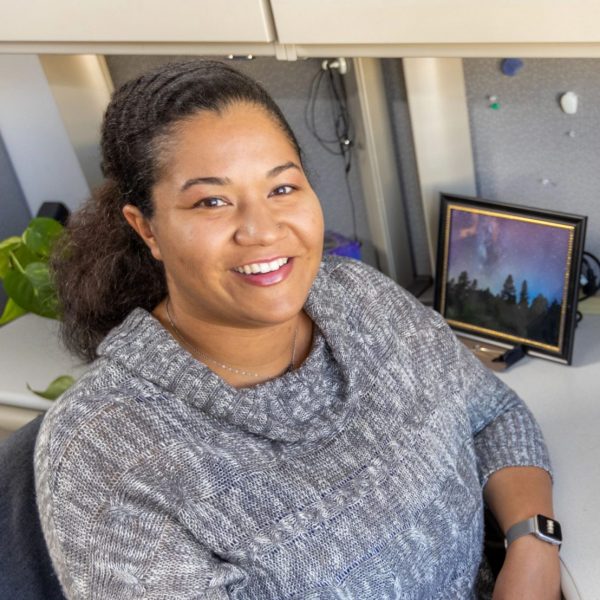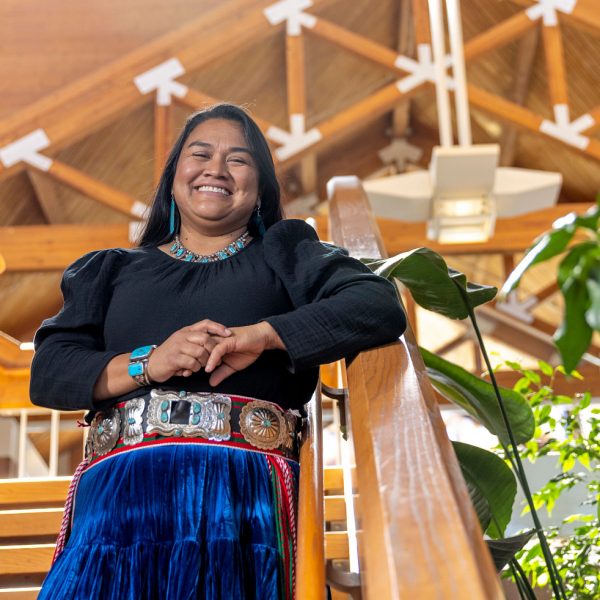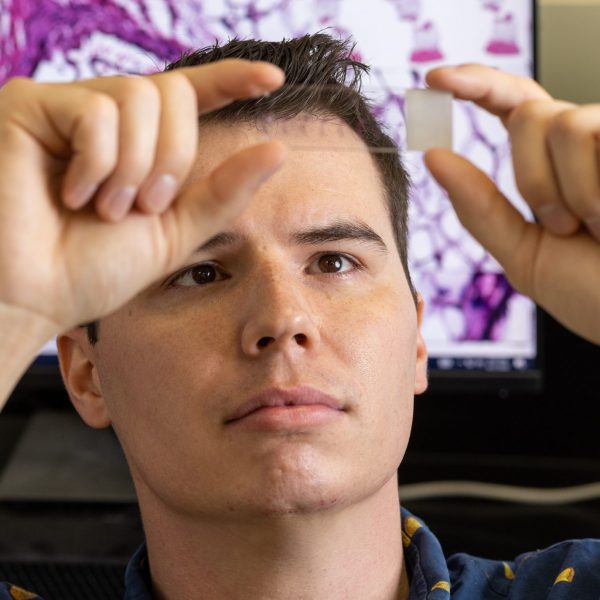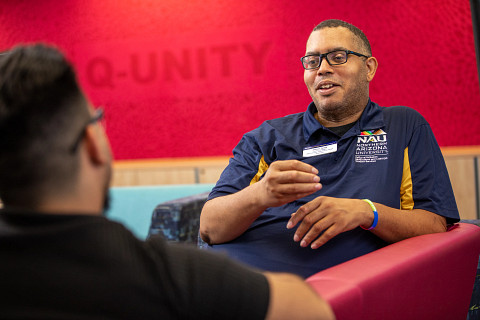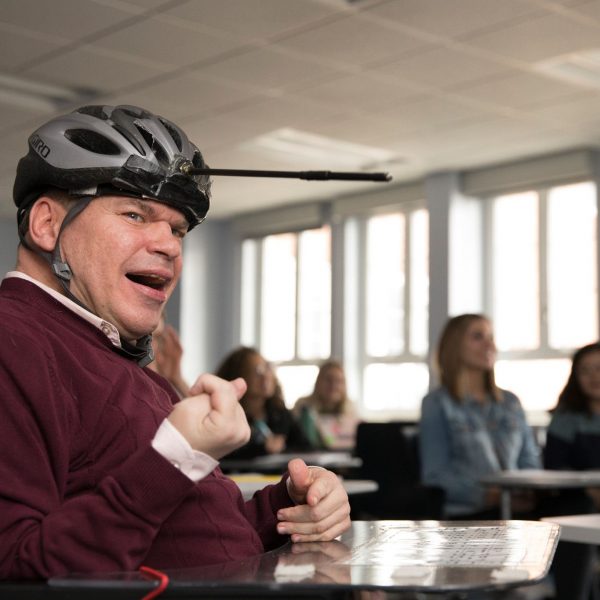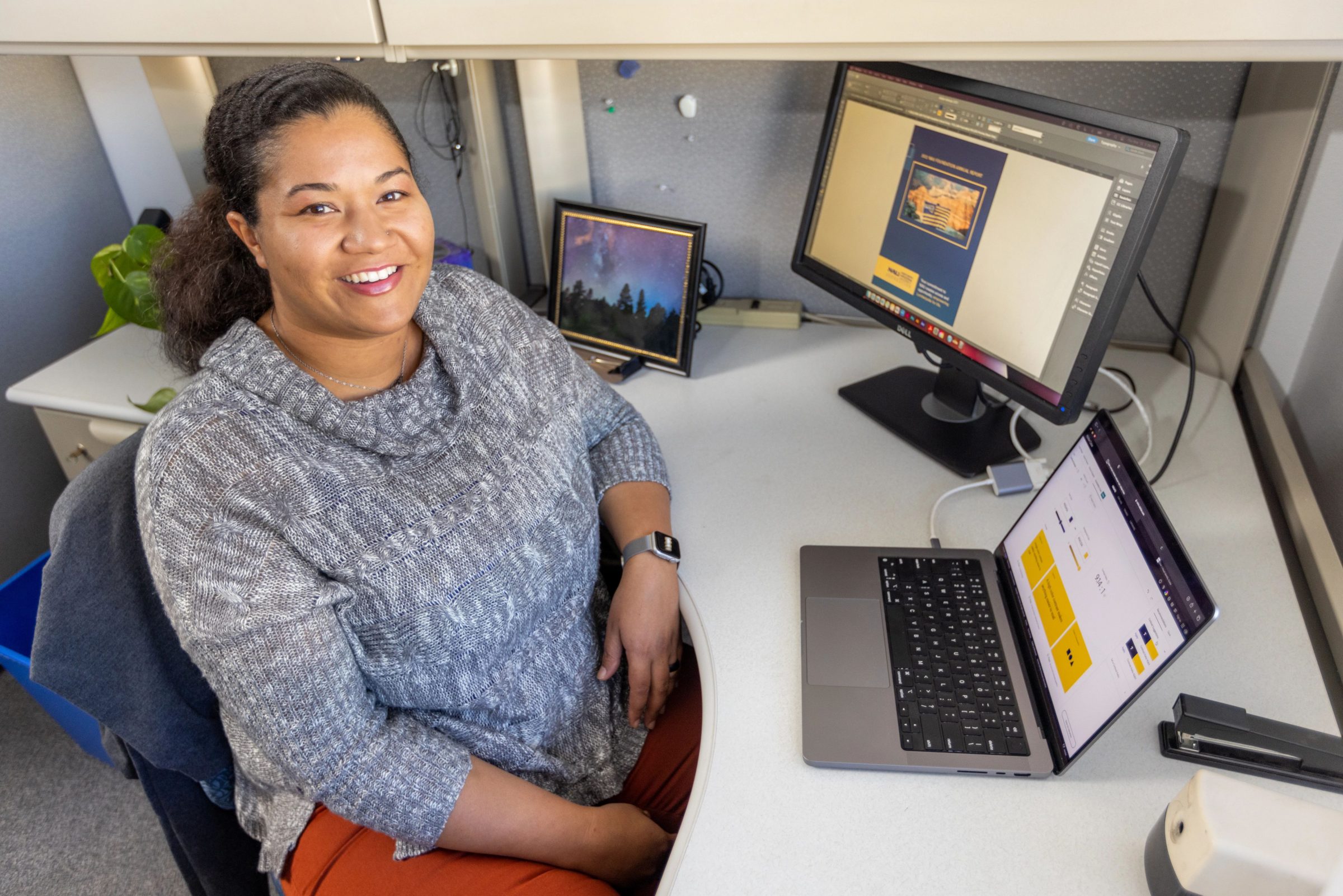
Charlese Bedford’s job seems straightforward.
She ensures that all University Marketing documents are fully accessible online. That means, in Bedford’s words, “The document has to be able to be read by anyone.”
The need for accessible documents is high. According to NAU’s Disability Resources, in the 2021–2022 academic year, more than 15,000 NAU students and faculty downloaded almost 120,000 documents made more accessible through BbLearn Ally.
Bedford, BFA Visual Communication ’16, estimates that 85 percent of anything created by NAU’s marketing department will be used online—and if it’s online, it needs to be accessible. “That’s a rough, rough estimate. But any type of flyer, brochure, any of the president’s large booklets or his reports, they’re all made accessible before they go on the web,” Bedford says.
Making a document accessible
As a graphic designer with University Marketing, Bedford specializes in remediation, or ensuring that all web documents comply with Americans with Disabilities Act (ADA) regulations. Remediation includes making sure videos have closed captioning, designing with sufficient visual color contrast, providing alt text for photos, and ensuring documents are formatted for a screen reader. Essentially, she makes sure that anyone, no matter what barriers they may experience in the digital sphere, will be able to access NAU’s web materials.
I think the biggest thing about accessibility is it would be great if everybody knew what that really meant.
She started learning about ADA requirements in documents when she was a graphic designer for Enrollment Management Communications. “I worked closely with Lauren Copeland-Glenn in Equity and Access. She assisted me with tutorials and information to get the ball rolling on learning how to do the remediation and the preparation with InDesign,” Bedford says. “I took hold of that and got really interested in it. And I’ve just sharpened my craft since.” In 2018, Copeland-Glenn nominated Bedford for the Leadership Award from the Commission on Disability Access and Design (CDAD) for her work on document remediation.
Jane Muller, Graphic Design Manager, hired Bedford as a graphic designer and ADA remediation specialist for University Marketing. “I saw the incredible importance of this a few years ago when Lauren Copeland-Glenn and her team brought it to our attention,” Muller says. “The thought that there may be many who wouldn’t be able to access our materials or have an experience that would not reflect well on NAU’s brand was really troubling.”
Luckily, designers like Bedford are leading the charge in helping NAU and other universities decrease access barriers in their web presence. “What I find rewarding is knowing that what I’m creating from start to finish can be seen or heard by anybody who needs to look at it,” Bedford says. “Like, you can see it, but when a screen reader goes through it, and it reads in the correct order from top to bottom, left to right, and it’s seamless—it’s neat to see your work be read out on a screen.”
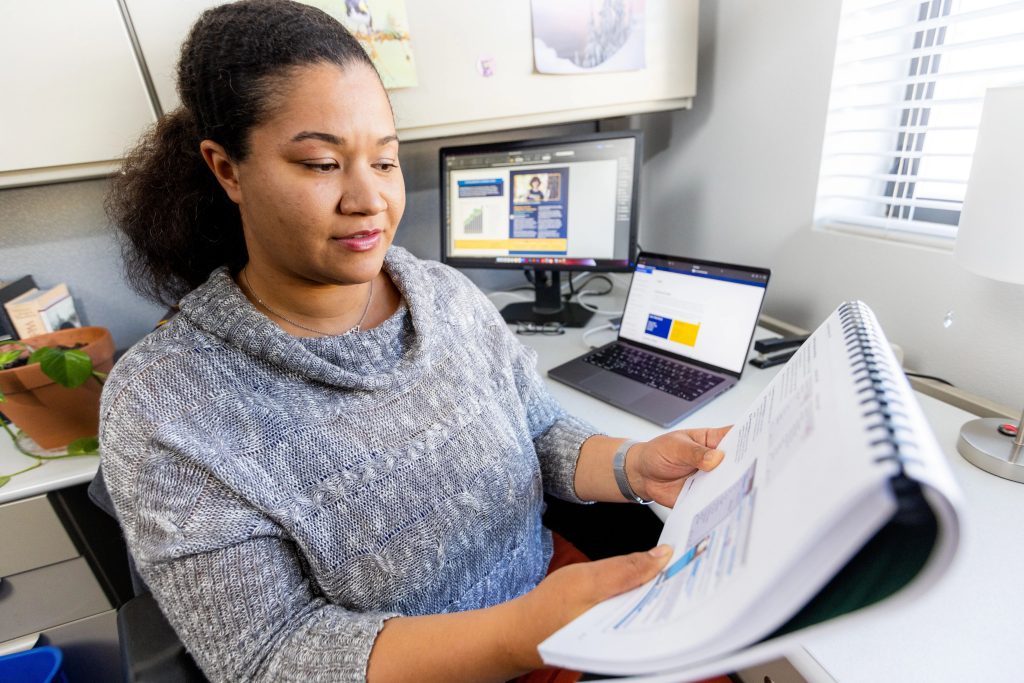
Often, improving accessibility improves usability for everyone. “I think more people are calling it intentional design. You’re designing with the idea that this is for a much broader audience,” Bedford says.
Teaching others
“The most challenging part of what I do is getting people to understand how important it is—I think less than five percent of graphic designers can do ADA. And that’s nationally,” Bedford says. She wants to change that. “One day, I’d like to teach people how to do this. I want to share the knowledge because I feel like we need to have more than five percent of graphic designers knowing about it,” Bedford says. “My dream right now is to create an online class for undergraduate graphic designers, and it’d be a requirement of their degree so that they know what ADA is.”
Muller shares that Bedford has already provided group and one-on-one training sessions and documented processes and resources for the marketing graphic design team. “Charlese brings a strong passion for, as well as a technical knowledge of, accessible design that our team was lacking. Her addition has been invaluable. Not only by expanding the capacity of making marketing pieces accessible through her meticulous skills in ADA remediation, but through the time and energy she has put into training our design team,” Muller says. “These trainings not only allow us to incorporate accessible design from the beginning of each project, but it’s a valuable and transferable skill in the marketplace.”
For Bedford, it’s time we all get on board. “I think the biggest thing about accessibility is it would be great if everybody knew what that really meant. I think the basics should be part of professional development regardless of your design skill,” she says. “We live in a technological time, so especially with social media, even being aware that anything you post online should be accessible too.”

